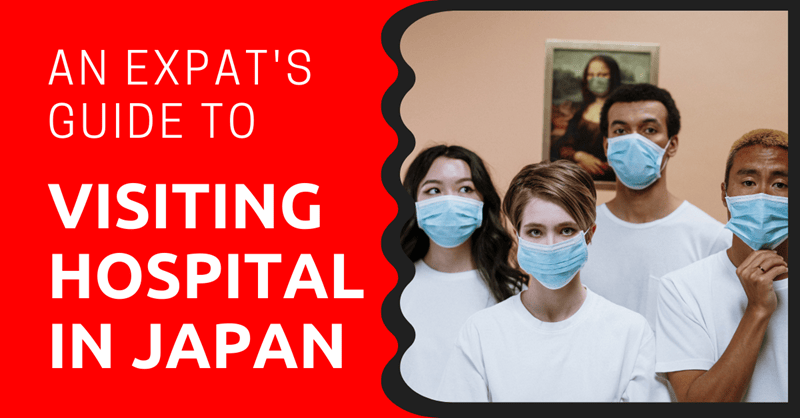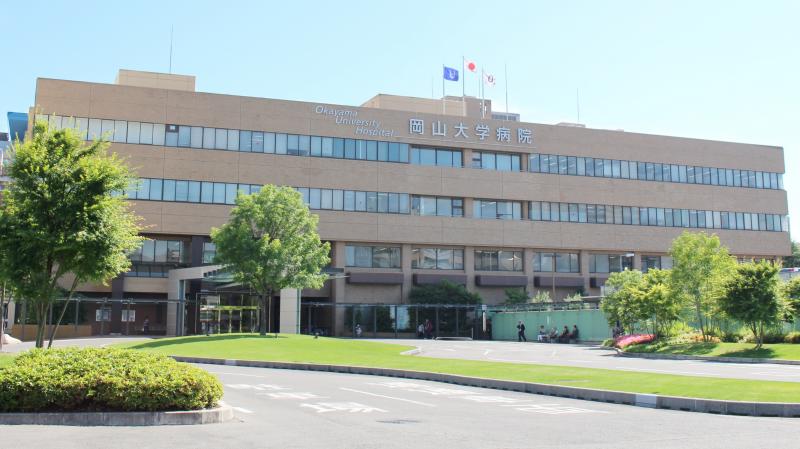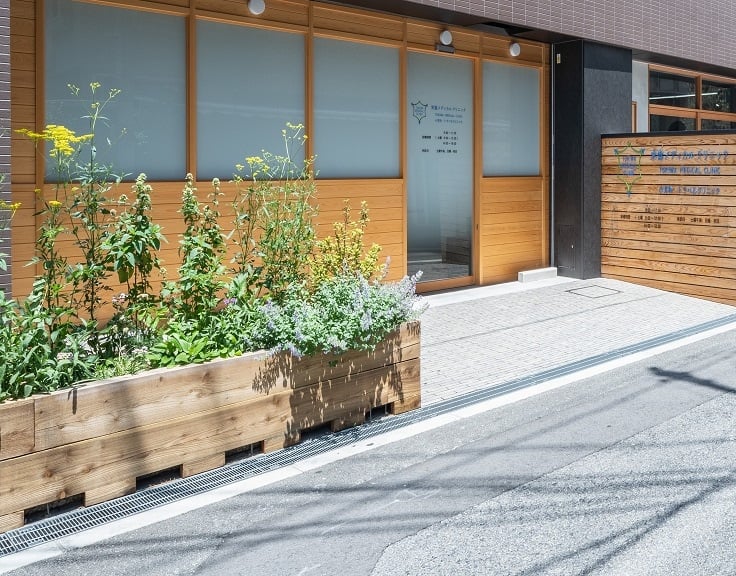
Japan’s hospital system is a bit of a unique experience; the specialists available can vary depending on the area you live in, and it differs from Western countries in many ways.
The concept of the “family doctor,” whether for children or adults, is not customary in Japan, and many of the clinics are divided into small specializations. So, what do you do if you are feeling ill and think you need to visit a hospital?
In this article, I am going to cover the answers to your questions, from types of hospitals and clinics to the reservation process (although these may vary), to the best course of action in case of an emergency.
While some of it may seem obvious, you will be surprised at a few differences that you will be glad you knew ahead of time. After all, knowing what you’re getting into is half the battle.
This article will take approximately 20 minutes to read. Don't have the time right now? No worries. You can email the ad-free version of the article to yourself and read it later!
Disclaimer: This article may include links to products or services offered by ExpatDen’s partners, which give us commissions when you click on them. Although this may influence how they appear in the text, we only recommend solutions that we would use in your situation. Read more in our Advertising Disclosure.
Contents
- Treatment Quality
- Types of Hospitals and Clinics in Japan
- Uniqueness of Healthcare System in Japan
- Navigating Reservation Processes and Consultations
- Example Costs of Surgery
- What to Expect If You are Hospitalized
- What to Do in Case of an Emergency
- Do I Need to Book an Appointment?
- Can I Choose the Clinic or Hospital?
- Do I Need to Speak Japanese?
- English-Speaking Hospitals
- Now, on to You
Treatment Quality
You can have high expectations for the treatment you will receive in Japan. I have been here for more than ten years and can attest to the professionalism and kindness of Japanese medical staff. You will find that, rather than unnecessary price gouging for treatments you may not need, the treatment is patient-centered and geared towards saving you money.
Since insurance is a national health care system or funded by taxes, there are no hidden charges, unexpected procedures, or many worries about not being able to afford the best quality healthcare for you or your loved ones.
This reduces a lot of anxiety for people with lower socio-economic status and helps to maintain relatively healthy communities. The only challenges you will find, which I will discuss next, are language barriers and confusion over the technologically evolving reservation systems.
Types of Hospitals and Clinics in Japan
There are several types of medical facilities that cater to people who live in Japan. They fall into three main categories: university hospitals, general hospitals, and specialized clinics.
University Hospitals
Firstly, university hospitals are the largest institutions; these hospitals have multiple functions and provide a wide range of healthcare services.
They also have the most expensive, state-of-the-art equipment, which allows them to handle the treatment of patients with really serious conditions.

Additionally, they reserve a large portion of funding and space within the hospital for medical research and professional training for future doctors and surgeons. In the area adjacent to where I live, one of the most prestigious university hospitals can be found.
You can check the Okayama University Hospital website to get more idea into what a university hospital in Japan offers.
Below is a list of popular university hospitals in Japan.
Hokkaido
- Hokkaido University Hospital, Sapporo
- Asahikawa Medical College Hospital, Asahikawa
Honshu
Northern Honshu (Tohoku Region)
- Hirosaki University Hospital, Hirosaki (Aomori Prefecture)
- Touhoku University Hospital, Sendai (Miyagi Prefecture)
- Akita University Hospital, Akita (Akita Prefecture)
- Yamagata University Hospital, Yamagata (Yamagata Prefecture)
Kanto Region
- University of Tsukuba Hospital, Tsukuba (Ibaragi Prefecture)
- Gunma University Hospital, Maebashi (Gunma Prefecture)
- Chiba University Hospital, Chiba (Chiba Prefecture)
- The University of Tokyo Hospital, Bunkyo-ku (Tokyo Prefecture)
- Tokyo Medical and Dental University Hospital, Bunkyo-ku (Tokyo Prefecture)
Chubu Region
- Niigata University Hospital, Niigata (Niigata Prefecture)
- Toyama Medical and Pharmaceutical University Hospital, Toyama (Toyama Prefecture)
- Kanazawa University Hospital, Kanazawa (Ishikawa Prefecture)
- Fukui University Hospital, Matsuoka (Fukui Prefecture)
- Shinshu University Hospital, Matsumoto (Nagano Prefecture)
- Gifu University Hospital, Gifu (Gifu Prefecture)
- Hamamatsu University Hospital, Hamamatsu (Shizuoka Prefecture)
- Nagoya University Hospital, Nagoya (Aichi Prefecture)
Kansai Region
- Mie University Hospital, Tsu (Mie Prefecture)
- Shiga University of Medical Science Hospital, Ohtsu (Shiga Prefecture)
- Kyoto University Hospital, Kyoto (Kyoto Prefecture)
- Osaka University Hospital, Osaka (Osaka Prefecture)
- Kobe University Hospital, Kobe (Hyougo Prefecture)
Chugoku Region
- Tottori University Hospital, Yonago (Tottori Prefecture)
- Shimane University Hospital, Izumo (Shimane Prefecture)
- Okayama University Hospital, Okayama (Okayama Prefecture)
- Hiroshima University Hospital, Hiroshima (Hiroshima Prefecture)
- Yamaguchi University Hospital, Ube (Yamaguchi Prefecture)
Shikoku
- The University of Tokushima Hospital, Tokushima (Tokushima Prefecture)
- Kagawa University Hospital, Miki (Kagawa Prefecture)
- Ehime University Hospital, Shigenobu (Ehime Prefecture)
- Kouchi University Hospital, Nangoku (Kouchi Prefecture)
Kyushu
- Kyusyu University Hospital, Fukuoka (Fukuoka Prefecture)
- Saga Medical School Hospital, Saga (Saga Prefecture)
- Nagasaki University Hospital, Nagasaki (Nagasaki Prefecture)
- Kumamoto University Hospital, Kumamoto (Kumamoto Prefecture)
- Oita University Hospital, Hazama (Oita Prefecture)
- Miyazaki University Hospital, Kiyotake (Miyazaki Prefecture)
- Kagoshima University Hospital, Kagoshima (Kagoshima Prefecture)
Okinawa
- University of the Ryukyu Hospital, Nishihara (Okinawa Prefecture)
General Hospitals
The second category is general hospitals. While they also have extremely large facilities, these hospitals tend to treat a wider range of conditions, from milder to severe. Moreover, they are less focused on medical training and research.
From a quick look at one of the largest hospitals, Tokyo General Hospital, a summary of the specialized departments they include are: internal medicine, hematology, neurology, cardiology, nephrology, respiratory diseases, neurosurgery, among an expansive list of other areas.
General Clinics
The most abundant medical facilities in Japan are in the third category: clinics that specialize in a single field of treatment. They are found in most Japanese neighborhoods and are your first step in talking to someone about a condition that you might have.

The doctors who work there will determine if you require attention from a larger hospital.
The biggest advantage of clinics is their accessibility, as they sometimes have walk-in service without needing an appointment. However, for guaranteed service, it is always better to give a call before you go.
The five most common types of clinics in Japan are internal medicine (Naika), orthopedic (Seikei), pediatric (Shonika), dermatology (Hifuka), and gynecology (Sanfujinka).
Uniqueness of Healthcare System in Japan
The healthcare system in Japan can be different from many parts of the world. For example, there’s no general practitioner (GP) or family doctor.
The Japan healthcare system also works with a referral system. In addition to that, the approach to painkillers and surgical practice can be totally different than in the West.
Referral System
Japan operates on a referral system. To visit a hospital in Japan, smaller clinics are recommended as your first course of action. If they can’t treat your sickness, you will be referred to larger hospitals.
Without a referral from a smaller clinic, you may have to pay an introduction fee, which is around 5,000 JPY for a local clinic. In the case of a hospital, it can be between 10,000 to 15,000 JPY.
It is much better to see a doctor at a local clinic, get a referral if needed, then proceed from there.
No General or Family Doctor
Unlike many countries in the world, there’s no general practitioner (GP) that deals with all types of sickness in Japan.
Instead, you will need to visit a clinic or a hospital that’s specialized in your sickness. For example, if you have a skin issue, you need to go to a skin clinic. In the case of an ear problem, you need to see an ear doctor.
While you can basically go wherever you want (hospital, general or university, or a clinic that deals with your illness), chances are that you will be referred to somewhere else that can deal with your sickness directly.
Painkillers and Surgical Practices
In Japan, the approach towards painkillers and surgical practices differs from many Western countries.
There is generally a more conservative approach to pain management post-operation in Japan. Meaning, you won’t get strong painkillers if you have your wisdom teeth out, and even if you are in significant pain after an operation, it is doubtful you will receive appropriate pain medicine to relieve it.
This holds true for anesthesia for surgery as well.
In Japan, separately trained specialists must be called to administer anesthesia, and while it is used, it is used sparingly (only around the body area that is under surgery, or half the body).
In fact, due to shortages in trained anesthesiologists, many women are not able to receive anesthesia during childbirth.
The surprising fact is that many Japanese women opt out of painkillers during childbirth, choosing 100% natural childbirth; using anesthesia is not a popular choice in Japan.
Navigating Reservation Processes and Consultations
Before visiting a clinic or hospital, you should understand a few key points. I have broken them down into easy-to-understand steps for you below.
Step 1: Choose Your Clinic or Hospital
This should be an easy search on Google Maps, and unless you live in the countryside, a facility that treats your illness should be readily available.
Sometimes, if it is only a simple cold, or a mild condition, you can even go to a drugstore, or pharmacy, and receive helpful advice from the staff. They have trained pharmacists on hand who are happy to suggest the appropriate medicine that will help you get better.
It is up to you to assess the level of sickness, and whether or not you need professional help, but I have found that simply going to a Japanese drugstore is a great option for sound advice for your mild symptoms.
Step 2: Making an Appointment
You should at least call to book an appointment before a clinic visit.
In my experience, walk-ins are sometimes accepted at local clinics, but it is good practice to call to avoid long waiting times, and to double-check the procedures.
It is an obvious reminder, but make sure you have your insurance card and identification with you when making the reservation.

In more recent years, medical facilities have begun to utilize applications to help connect people to the service they need. One example is the use of the HELPO app – it allows users to conduct health consultations remotely via chat (telemedicine), but the main feature is that you can make appointments with ease.
Another major technological advancement is the new M3 DigiKar Smart Payment system. It is a cashless payment service for medical facilities, and also aids in more seamless booking of appointments and consultations.
Step 3: Fill Out a Patient Intake Form
Please keep in mind that no matter where you go, you will have to fill out a patient intake form, with your basic information, past medical conditions, and the reason for your visit.
You can see this English patient intake form sample from a university hospital in Kyushu. It might be handy to review it before your hospital visit.
This particular hospital also has “reservation machines” that you actually see in most modern hospitals here, and they often have an English menu for non-Japanese speakers.
Step 3: The Consultation with a Medical Professional
Next, the steps are similar to those everywhere else: get health checks and talk to a doctor.
If you are semi-fluent or fluent in Japanese, speaking about your conditions with the doctor will be no problem.
Step 4: Treatment, Medication, Consultation Costs
First consultation fees are not excessive; if you have Japanese health insurance, you should plan to bring 5,000 to 10,000 JPY for your first consultation at a clinic, or 10,000 to 15,000 JPY for your consultation at a hospital.
Keep in mind that you will not need to pay first consultation fees if you receive a referral letter from a medical professional.
However, if for some reason you do not have Japanese health insurance, it is recommended you bring 20,000 JPY for your first consultation at a clinic, and 20,000 to 50,000 JPY for a hospital.
The prices for not having Japanese health insurance greatly vary and are at the discretion of the medical facility you are requesting service from.
After your doctor assesses the symptoms and diagnoses your condition, you will either be referred or given medication or advice for treatment.
If additional tests are required, you will be guided through the process. Also, when you receive your prescription form for the medicine, you will be told where to pick up your medicine.
Step 5: Paying for Your Treatment
It’s also important to note that payment will be due at the end of your visit, and clinics and hospitals do not accept credit cards for payment.
If you have a Japan bank account, many hospitals now start to accept a mobile payment.
Depending on your insurance co-pay, you should prepare to pay in cash on the same day that you receive treatment or upon discharge from a medical facility.
Example Costs of Surgery
Medical costs that go beyond certain thresholds, or are extremely expensive, are subsidized and managed equitably under Japan’s health system. This, however, really depends on the type of surgery. For example, even if a surgery costs 500,000 JPY, a patient will only need to pay from 10 to 30% (this is decided based on insurance type and age).
According to research studies, the average medical cost for a hip fracture per patient was approximately 2,550,000 JPY (23,180 USD).
An average citizen in Japan would pay about 30% of this medical bill, with the rest covered by insurance. Just know, if you happen to need very expensive treatment for certain diseases, Japan offers a number of ways to cap the payments so you will not be excessively charged.
These payment caps will be calculated on your monthly income, and will not exceed a payment that makes it difficult for you to pay for your other living costs.
This table gives you a great overview of different illnesses, and the length of stay at a hospital with the projected costs of treatment listed next to each one. It also shows you how much it would cost with and without Japanese insurance.
What to Expect If You are Hospitalized
Hospital rooms in Japan are different depending on the type of hospital and the level of care required, but here are some common features that you can expect.
While some hospitals have private rooms, most general wards have multiple beds in one room separated by a curtain. Alongside your bed, you will have a nightstand; you will have bathroom access, and access to a shower. Each room has a call button for nurses.
What you won’t find are toiletries, towels, extra clothes, or slippers. Patients themselves, or their family members are expected to bring all of these items. Additionally, family members or friends are expected to help with any non-medical needs like feeding, and or bathing of their loved one.
What to Do in Case of an Emergency
If you are having a medical emergency in Japan, the first thing you will need to do is dial 119 to call an ambulance.
It will connect you directly with the dispatcher, and they will give you guidance. English-speaking operators are not always available, so I suggest, just in case of an emergency, you prepare the Japanese you may need ahead of time. You will only need your address, your name, and a description of the situation.
If you are not able to describe the situation in Japanese, the operator may be able to understand basic English if you speak slowly. That being said, you should at least have your address committed to memory.
Transportation to the hospital by ambulance, as well as the fire rescue services in Japan, do not incur any charge to you and are essentially free.
However, if you do not have Japanese insurance, the care when you arrive at the medical facility will be costly. In terms of response time, an ambulance will arrive about 20 minutes after the call in most suburbs and urban areas.
Do I Need to Book an Appointment?
Not every clinic and hospital in Japan accept a walk-in patient. Therefore, it’s always recommended to make an appointment before visiting any hospital or clinic.
In addition, visiting a clinic or a hospital is all about making an appointment. When you make an appointment at a certain clinic, they may refer you to another nearby clinic within their networks where you can get help the quickest.
Can I Choose the Clinic or Hospital?
You can choose a hospital yourself, but without a referral from a smaller clinic, you pay a more expensive introduction fee. It’s better to go to a clinic first if you know what the problem is.
For example, if you have a stomach problem, go to a nearby gastroenterology clinic.
Do I Need to Speak Japanese?
Yes, to visit a hospital in Japan, you should be able to speak Japanese.
If you are not fluent in the language, then I suggest one of three choices:
A. You can hire a language translator to help you explain your symptoms, and to understand the explanation of the medical professional. There are many translator companies to use, and you can even ask a local native Japanese person (possibly a co-worker) to accompany you on your consultation visit.
Freelancers are also available for hire, and some of them may live in Japan and can assist you in person. You can find from the site like freelancer.com. This is a common solution for many foreigners, as the likelihood that your local clinic will have an English speaker is extremely low.
B. Look for a hospital/clinic with English-speaking staff. While these are not as numerous as you may expect, they do exist in major cities around Japan. If you are willing to travel a bit to seek medical help, this could be an excellent option for you.
C. Study and write down your symptoms and what you want to say before you go to the consultation. Ask a friend to check your translated notes.
Besides this preparation, you can also ask ahead of time if the doctor would be willing to use translation software like AI voice translation tools when speaking with you.
While the voice translations will not be perfect, you will be able to at least effectively communicate with the medical staff.
English-Speaking Hospitals
Below is a list of English-speaking hospitals in Tokyo and Osaka. Please note that it is by no means exhaustive. However, we only include hospitals or clinics that we know have English-speaking staff.
If you know any other English-speaking hospital in Japan, please feel free to let us know in the comment.
Tokyo
- Tokyo Takanawa Hospital (Takanawadai Station): Offers various medical services including internal medicine, orthopedic surgery, and neurosurgery.
- Sanno Hospital (Aoyama-itchome Station): Known for its dentistry, ophthalmology, and obstetrics & gynecology departments.
- International Health Care Clinic (Shimbashi Station): Provides multilingual treatment for non-life-threatening illnesses and injuries.
- Tokyo Midtown Clinic (Roppongi Station): Special outpatient center and health screening center, accredited by Joint Commission International.
- Tokyo Saiseikai Central Hospital (Akebanebash Stationi): Offers comprehensive medical care and has an Emergency and Critical Care Center.
- Medical Clinic Hiroo (Hiroo Station): Provides a broad range of medical services including pediatrics, internal medicine, and dermatology.
- National Medical Clinic (Hiroo Station): Specializes in pediatric medicine and surgery, and offers general internal medicine and immunization.
- Tokyo Medical and Surgical Clinic (Kamiyacho Station): Multilingual European and U.S.-trained doctors offering family practice, specialty consultations, and more.
Osaka
- Kenporen Osaka Central Hospital (Osaka-Umeda station): Departments include Internal Medicine, Gastroenterology, Urology, Surgery, Ophthalmology, ENT, Orthopedic Surgery, Cardiovascular Internal Medicine, Dermatology, Gynecology, Plastic Surgery.
- Osaka Lee Clinic (Osaka-Umeda station): Specializes in Internal Medicine and Respiratory Medicine.
- Osaka City General Hospital (Miyakojima Station): Offers a wide range of departments including Internal Medicine, Respiratory Surgery, Gastroenterology, Pediatrics, Ophthalmology, ENT, Orthopedic Surgery, Cardiovascular Internal Medicine, Dermatology, Neurology, Neurosurgery, Psychiatry, Gynecology, Rehabilitation, Plastic Surgery, Breast Surgery, Diabetology. A
- National Hospital Organization (Tanimachiyonchome Station): Departments include Respiratory Medicine, Gastroenterology, Pediatrics, Ophthalmology, ENT, Orthopedic Surgery, Cardiovascular Internal Medicine, Dermatology, Neurosurgery, Psychiatry, Obstetrics and Gynecology, Gynecology, Radiology, Rehabilitation, Plastic Surgery, Cardiovascular Surgery, Breast Surgery, Diabetology.
- Yodogawa Christian Hospital (Kunijima Station): Offers departments such as Respiratory Medicine, Gastroenterology, Urology, Pediatrics, Surgery, Ophthalmology, ENT, Orthopedic Surgery, Cardiovascular Internal Medicine, Dermatology, Neurosurgery, Psychiatry, Obstetrics and Gynecology, Gynecology, Radiology, Rehabilitation, Rheumatology, Plastic Surgery, Cardiovascular Surgery, Breast Surgery, Diabetology.
- Osaka General Medical Center (Nagai station): Specializes in Internal Medicine, Respiratory Medicine, Respiratory Surgery, Gastroenterology, Pediatrics, Pediatric Surgery, Ophthalmology, ENT, Orthopedic Surgery, Dermatology, Neurology, Neurosurgery, Psychiatry, Obstetrics and Gynecology, Gynecology, Radiology, Rehabilitation, Rheumatology, Breast Surgery.
- Chuo Emergency Medical Center (Nishi-Nagahori Station): Specialized in Pediatrics, Ophthalmology.
- Yodoyabashi Medical Clinic (Yodoyabashi Station): Departments include Internal Medicine, Urology. Address: 4F, Shoei bld. 3-5-20 Kitahama, Chuo-ku, Osaka City, Osaka.
- Tokiwa Medical Clinic (Showachō station): Specializes in Internal Medicine, Pediatrics
- Minoh City Hospital (Minoh City): Offers departments like Gastroenterology, Urology, Pediatrics, Surgery, Ophthalmology, ENT, Orthopedic Surgery, Dermatology, Neurosurgery, Psychiatry, Obstetrics and Gynecology, Gynecology, Radiology, Rehabilitation, Plastic Surgery.
Now, on to You
We hope that this article has answered everything you need to know when it comes to getting treatment at a hospital or clinic in Japan.
If you have any questions, please feel free to ask them in the comment section below.








Great article, thanks. If you’re a tourist or living here attached to a military base or embassy you will have a poor experience if medical care is needed. We are not allowed to have Japanese NHI even if we want to pay for it. Also, medical facilities are allowed to charge retail price + 200% fee so they all do it. For example, a $20 office visit would be $6 for locals (30% co-pay after NHI) but a foreigner will pay $40. This is awful when it comes to something more expensive. $2,000 procedure that would cost a local $600 (or less) would cost the foreigner $4,000. That is a HUGE difference.
Please add a comment subscription to the site so commenters can be notified when another comment is posted.